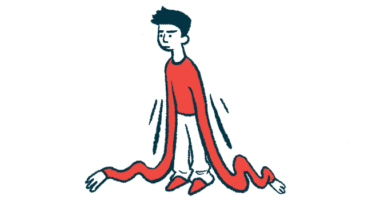Muscle Strengthener Found to Ease Patient Fatigue in Small Study
Pyridostigmine may be new treatment for SMA symptom: trial data

Treatment with the muscle strengthener pyridostigmine may reduce patient-reported fatigue among people with spinal muscular atrophy (SMA), results from a small clinical trial suggest.
Still, the treatment failed to ease motor fatigue and improve motor function compared with a placebo — which were the main goals of the trial.
“There were no significant differences in primary outcomes, but the self-reported reduction of fatigability and improved endurance … score performance suggest that pyridostigmine may be useful as an additional therapy” for fatigue alongside other SMA treatments, the researchers wrote.
“A larger trial is needed to confirm these findings, preferably with pyridostigmine both [alone] and as add-on therapy,” the team added.
Results of the study were published in Brain Communications, in a paper titled “Randomized double-blind placebo-controlled crossover trial with pyridostigmine in spinal muscular atrophy types 2–4.”
Pyridostigmine shows benefits as treatment for fatigue
Symptoms of SMA are caused by the progressive death and dysfunction of motor neurons, the specialized nerve cells that control movement.
Motor neurons communicate with muscle cells by releasing a chemical messenger called acetylcholine, which prompts muscles to contract. However, the progressive loss of motor neurons in SMA causes the muscles to gradually weaken and waste away.
Pyridostigmine blocks an enzyme that degrades acetylcholine, thereby boosting the power of messages sent from motor neurons to muscles. The medication is used to help improve muscle strength in myasthenia gravis, an autoimmune disorder that also causes muscle weakness.
To investigate the safety and effectiveness of pyridostigmine in people with SMA, UMC Utrecht, in the Netherlands, sponsored a Phase 2 clinical trial (NCT02941328) involving people with SMA types 2, 3, or 4. The trial was dubbed SPACE
The 37 participants, all age 12 and older, were randomly assigned to take daily pyridostigmine or a placebo for eight weeks, or about two months. The starting dose of pyridostigmine was 2 mg per kg of body weight per day, which was gradually increased up to 6 mg/kg/day based on tolerability.
After the eight weeks, patients went through a one-week washout period to allow the treatments to clear the body. Those originally given pyridostigmine were then given a placebo, and vice versa. Using this crossover design allows data to be collected for all patients while on both active treatment and the placebo.
None of the patients were on disease-modifying treatment, as these were not available at the time the trial was conducted.
The study’s main goals were to assess the effect of pyridostigmine treatment in tests of motor fatigue and motor function. Specifically, participants were given the repeated nine-hole peg test (R9HPT), which measures motor fatigue by asking patients to perform dexterity exercises in five consecutive rounds, and the motor function measure (MFM), an assessment of overall motor function.
Results showed no significant difference between pyridostigmine and the placebo for R9HPT scores. For MFM, scores tended to be slightly better on pyridostigmine than placebo — average 42.4% vs. 41.6% — but the difference ultimately was just 0.74%.
“The small difference in MFM scores between the treatment arms favoured pyridostigmine, but did not reach the prespecified level of statistical significance,” the researchers wrote.
While the trial’s primary goals were not met, secondary measures showed that about three-quarters (74.4%) of patients on pyridostigmine reported less fatigue with treatment compared with 29.7% of those on the placebo. Statistical analyses showed that a reduction in fatigue was nearly seven times more likely with pyridostigmine than with a placebo.
The self-reported reduction of fatigability and improved endurance … score performance suggest that pyridostigmine may be useful as an additional therapy [for fatigue].
Patients on pyridostigmine also were 70% less likely to drop out during the endurance shuttle test (ESTCS), a measure of physical endurance.
Treatment with pyridostigmine was generally well-tolerated in the study; no serious side effects related to treatment were reported. Most reported side effects were mild and resolved in time, and the most common were digestive complaints.
“Pyridostigmine was well-tolerated, with suggestive evidence that pyridostigmine may reduce fatigability, as shown by a reduction in self-reported fatigability in combination with the 70% reduced ‘dropout risk’ on the ESTCS,” the researchers wrote.
The scientists stressed that this study is limited by its small size, and emphasized that further research is needed to evaluate the effects of pyridostigmine in SMA. They also noted that, since this trial was conducted, several treatments that target the cause of SMA by boosting levels of SMN protein have become widely available.
“Future studies to further establish pyridostigmine efficacy will therefore need to be designed to include various SMN-augmenting therapies, and primarily evaluate its add-on effect,” the researchers wrote.
The team also noted that, although pyridostigmine was generally well-tolerated in this trial, it should not be given to individuals with severe swallowing or breathing difficulties because it may increase salivation and cause patients to aspirate this fluid into the lungs.








